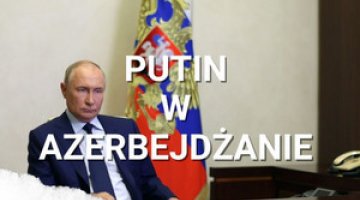Russia’s attack on Ukraine: day 55

The offensive, which began on 18 April, is meeting resistance from Ukrainian forces, preventing the rapid advance of Russian troops. The main objective of the aggressor is to establish control over the whole of the Donetsk and Luhansk oblasts and to maintain and possibly expand the land corridor linking Russia to Crimea. In contrast, the invading forces are not undertaking a land attack on Kharkiv, although they are partially blocking the access roads to the city and continuing to shell it. Moscow intends to capture the transport route leading from Russia through Izyum in a west-south direction, which, if successful, is expected to facilitate the encirclement of defenders in the Sloviansk and Kramatorsk areas. In Donbas, advanced Ukrainian positions blocking the enemy’s advance from Donetsk to the northwest are being shelled. Continuing its ground operations, the aggressor is searching for weaknesses in the Ukrainian defence and aiming to break it. Intense fighting is going on in the area of Kreminna and Torske northwest of Sievierodonetsk The invaders are regrouping for a further offensive towards the village of Lyman (about 30 km from Slavyansk). Within 24 hours, the Armed Forces of Ukraine repelled ten attacks on the territory of the Donetsk and Luhansk oblasts. Russian attempts to make rapid advances in the east of the country failed.
Over the past 24 hours, the aggressor forces have continued to shell the Azovstal combine in Mariupol, the main point of resistance for the city’s defenders. The intensity of the operations indicates that destroying this point of resistance or bringing about its surrender is of symbolic importance to the Russians.
Intense fighting continued near the village of Polohy, located about 100 km south of Zaporizhzhia. Ukrainian troops stopped an attack aimed at opening a road to the north, blocking Zaporizhzhia and moving out towards the Dnieper.
In the Kherson and Mykolaiv oblasts, no offensive actions in the western direction were reported, but shelling of Ukrainian positions continued. According to the General Staff, it is expected that the aggressor will attempt a strike to push the defenders out of the administrative borders of Kherson Oblast. Rocket shelling of civilian facilities in Mykolaiv continues. Four Russian vessels armed with Kalibr missiles are in the Black Sea, prepared to shell Ukrainian territory.
Although the invaders have abandoned ground operations north of Kyiv, there is a constant threat of rocket and air attacks from Belarus, where Russian forces continue to use airfields and other military facilities. Belarusian units holding positions in the Brest and Gomel oblasts cover the border with Ukraine. Maintaining troops in Belarus and in the Russian oblasts bordering Ukraine is aimed at tying down enemy forces and preventing their advance into the area of ongoing fighting.
Due to heavy losses, the invaders withdrew the battalion tactical group of the 237th Tank Regiment of the 3rdMotorised Rifle Division of the 20th Army of the Western Military District from Kharkiv Oblast. At the same time, they deployed additional squadrons of Tor anti-aircraft missile sets in this Ukrainian Oblast, and squadrons of S-400 and S-300 anti-aircraft missiles were delivered to the border Belgorod Oblast.
According to Ukrainian military intelligence, enemy forces are still struggling to replenish their manpower. In order to speed up the replenishment of units, the Russian command is offering short-term contracts for three months or more, and the rigours of passing a psychophysical test have been relaxed. However, these steps have not increased interest in taking up service in Ukraine. Chechen leader Ramzan Kadyrov is recruiting volunteers to fight in Ukraine by promising them a one-off payment of 300,000 roubles ($3,700). The requirements for candidates are minimal – they must be healthy men under 50, not necessarily with combat experience. Also, no contracts are envisaged. Volunteers are to be recruited through a recruitment centre in Grozny, and after a 10-day briefing – sent to Ukraine.
Independent Russian media have revealed a total of six names of crew members of the damaged guided missile cruiser Moskva who lost their lives. The disappearance of some of them was reported in social networks by their families. The Russian Defence Ministry does not acknowledge any losses and maintains that the entire crew of the ship was rescued.
In the village of Rozivka in the Zaporizhzhia Oblast, armed occupiers, under the pretext of discussing social benefits, gathered a part of the population (mostly the elderly and refugees from Mariupol) in a community centre and forced a ‘vote’ on the temporary incorporation of the village and the entire region to the so-called Donetsk People’s Republic (DPR). President Volodymyr Zelensky once again appealed to the inhabitants of the occupied territories not to cooperate with the invaders. At the same time, he pointed out that the Russians are trying to highlight alleged willingness of the local population to collaborate, when in fact after 55 days of war they have managed to draw only a small group of people to their side.
A Pentagon spokesman communicated that several Western countries had provided Ukraine with platforms and spare parts for aircraft, and that Kyiv now had more operational fixed-wing fighters. In a similar pattern, the defenders were to receive tanks and spare parts for them. The spokesman also announced Russia’s intention to attack routes used to transport weapons for the Ukrainian Armed Forces, specifically to destroy bridges and supply routes. He also assured that the aggressor will not achieve its goals due to the high intensity of military aid. The Pentagon assesses that the Ukrainian defenders are effectively using the weapons sent to them and have successfully implemented a decentralised command and control system in the army.
President Joe Biden confirmed on 19 April that the US plans to provide Ukraine with another military aid package (including artillery assets). The $800 million tranche could be approved within the next 36 hours. A number of other Western states are to provide additional military support: the UK (artillery armament), the Netherlands (armoured vehicles), Canada (heavy artillery), Norway (Mistral anti-aircraft missile systems) and Finland (no details available). President Zelensky pointed out once again that the military aid has so far been insufficient, and stressed that if the West had made necessary weapons available to the defenders earlier, Ukraine would have already ended the war.
On 19 April, the leaders of the United States, Italy, France, Germany, the United Kingdom, Canada, Japan, Poland, Romania and the EU and NATO discussed providing security guarantees for Ukraine since it is not covered by the provisions of Article 5 of the North Atlantic Treaty. The French President’s spokesperson reported that these guarantees may resemble the defence clause currently in force in the European Union rather than a mechanism analogous to Article 5.
No humanitarian corridor was in operation between 17 and 19 April, as the Russian troops had not agreed to open any of them. One is planned for 20 April – from Mariupol towards Berdiansk and Zaporizhzhia for women, children and elderly people. Ukrainian Railways has launched four evacuation trains (from Odesa, Kharkiv, Pokrovsk and Zaporizhzhia) to cities in the western part of the country.
In a new forecast, the International Monetary Fund predicts that Ukraine’s GDP will fall by 35% in 2022. It noted that even if the war ends in the near term, the destruction of infrastructure, human losses and the large number of refugees will be obstacles to economic development in the years ahead. Ukrainian investment fund Dragon Capital estimated that GDP fell by 45% in March, and that the economy would contract by 25% for the whole year in the event of a ceasefire in the coming months. A survey of its members conducted by the American Chamber of Commerce in Kyiv found that after 50 days of war, 41% of businesses are functioning normally and another 50% are operating in a limited capacity.
According to information from the Polish Border Guard, since the beginning of the aggression 2.86 million people have left Ukraine for Poland, and on 19 April – 25 thousand (a 25% increase compared to the previous day). The border in the opposite direction was crossed yesterday by 18.8 thousand people, and since 24 February – 756 thousand.
Commentary
- The third day of the Russian offensive has not brought spectacular success. The aggressor’s actions indicate that it aims to close off Donbas from the north and then continue fighting with the surrounded Ukrainian units. So far, due to the resistance of the defending forces, the Russians have not achieved this objective. The fighting in the direction of Zaporizhzhia indicates that they intend to blockade this city and, if successful, capture the communication routes towards the Dnieper.
- The fall of Mariupol would allow the invaders to declare ‘victory’ in the form of maintaining the communication link between occupied Crimea and Russia. The commander of the 36th Infantry Brigade of the Ukrainian Armed Forces defending itself in Mariupol acknowledged the dire situation and appealed to the international community to take steps to rescue the more than 500 civilians and wounded who found shelter at the Azovstal combine. The hopeless situation in which the defenders of this plant find themselves indicates that the aggressor does not intend to break the siege on humanitarian grounds. It makes the evacuation of the wounded and civilians conditional on the declaration of surrender. For Russian propaganda, the defeat of the defenders is supposed to be ‘an act of victory over Ukrainian nationalism’. It is likely that if Mariupol is captured, the invaders will want to organise a show trial of members of the Azov regiment and foreign volunteers.
- The Russian forces are trying to recruit collaborators among the inhabitants of the occupied territories, by enforcing cooperation by repression and deception, but most of their endeavours lead to failure. The ineffectiveness of the operational measures taken may be confirmed by the reports on the arrest of the so-called head of the Ministry of Interior of the so-called Lugansk People’s Republic (LPR) – this event is considered by Ukrainian intelligence as the beginning of purges that Russia is conducting in the self-proclaimed republics.
- The propaganda inclusion of the Rozivka region in the Zaporizhzhia Oblast into the so-called DPR is probably the first step towards the creation of the so-called Zaporizhzhia People’s Republic. More and more reports indicate that in the occupied south of Ukraine, Russian forces are preparing ‘referenda’ on the creation of so-called people’s republics. In all probability, the Kremlin’s aim is to incorporate into the Russian Federation not only the so-called Donetsk and Lugansk People’s Republics, but ultimately also further pseudo-separatist Ukrainian regions.




